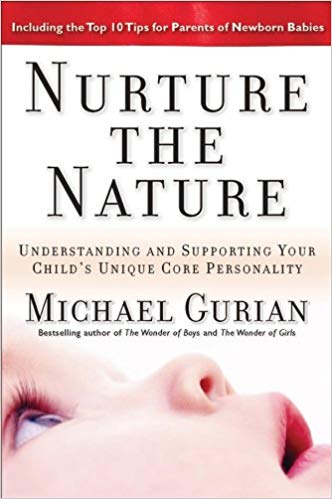Cookie-Cutter Kids: Flaws of the Social-Trends Parenting System
Most parents desperately want the best for their children, but what is “the best”?
Nurture the Nature: Understanding and Supporting Your Child’s Unique Core Personality
Michael Gurian. 2007. John Wiley & Sons, Jossey-Bass, San Francisco. 368 pages.
Most parents desperately want the best for their children, but a clear vision of what constitutes “the best” is hard to come by. Parental goals for their progeny might include longevity, financial success, fame or intellectual brilliance. Some might use a general term such as happiness to describe what they want for their children. Others may have a more explicit goal in mind; “My child is going to be the next Tiger Woods,” for example. Whatever the objectives, bookstore shelves bulge with advice to help parents achieve them. And parents take this advice. Too much of it, Michael Gurian believes.
Bombarded by sometimes conflicting advice from popular child-rearing gurus, parents throw what they hope are mind-expanding, success-ensuring programs at their children, to the point that children may become overstressed and overstimulated by the constant activity. Even from birth, babies are subjected to the latest enrichment fads: exposure to the “right” music, or to toys and mobiles sporting the right brain-boosting color combinations. Many parents fall for the assurances that such advice is neglected at great peril to their child’s future, so they find themselves trying frantically and unsuccessfully to apply everything they hear—often at tremendous expense to the family’s coffers and the child’s peace of mind.
Michael Gurian calls this method of parenting “the social trends parenting system.” In his latest book, Nurture the Nature: Understanding and Supporting Your Child’s Unique Core Personality, Gurian denounces the “media- and society-driven system of raising kids that takes the locus of control for child-raising away from the parents’ instincts about their own children’s nature and puts it in the middle of constantly changing social fads, experts, and infotainments.” In place of society’s cookie-cutter approach, which he sees as being the result of the industrial revolution’s assembly-line mentality, he suggests a more tailored one.
Gurian believes that when parents take the time to understand each child’s individual nature—his or her weaknesses, strengths and purpose—they can set better boundaries for their children and provide the right kinds of stimulation in the right doses. “As we see our child’s young core nature flourish imaginatively, in nature, in purpose and responsibility, and in a reasonable schedule with reasonable material objects in tow,” he says, “we can feel a calm in our home and a deeper sense of purpose ourselves.”
But how do we go about discovering our child’s individual nature? Gurian points out that some aspects of a child’s core nature are dictated by personality and temperament, while others are dictated by gender. For example, gender science is now able to provide parents with confirmation that the brain of a ten-year-old boy is wired for physical activity to a much greater degree than the brain of a girl the same age. Hers, in contrast, is wired more strongly for attention to relationships. With this kind of information in their arsenal, parents can better decipher how best to address their children’s weaknesses and strengths, with the goal of helping them develop meaning and purpose.
According to Gurian, “a child’s individual core nature finds meaning through responsibility. A child ‘means something’ because he or she must act meaningfully. A sense of purpose in the child and then the adult comes from small seeds of purposeful action.” In other words, by requiring our children to take responsibility through their actions and for their actions, we help them come to some understanding of why they are alive. Conversely, Gurian believes a child’s “natural search for meaning and purpose” can be distracted by a frivolous abundance of material possessions and activities that have been accumulated without relevance to the child’s hard work or self-development.
Gurian then offers practical advice broken down by age group to help parents nurture this need for meaning and purpose throughout their children’s lives. While one of his stated governing principles is that “character and moral development, as well as spiritual reflection and moments of joy, are crucial for fully developing the nature of each child,” that is the only time the terms character and moral development actually appear in the text. Much of the advice in his book may result in the effective building of character and the development of a moral intelligence, but Gurian’s statement still leaves one looking for further elucidation of these concepts. Then again—perhaps they have enough depth to warrant separate treatment in another book.

